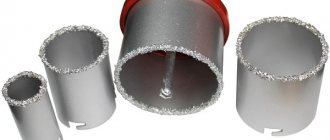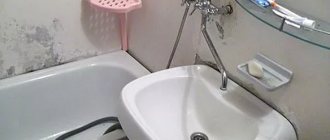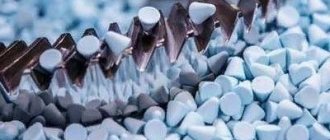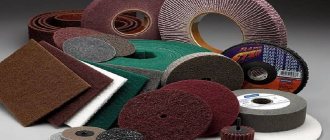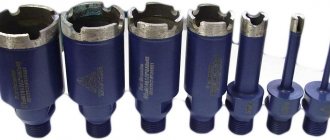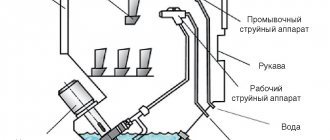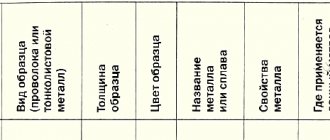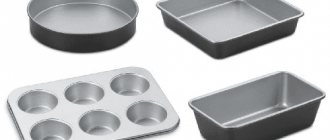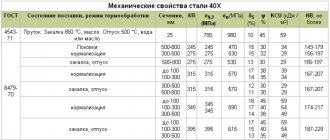Tumbled stone means natural or artificial processing of stone - this means that a block or rubble, under the influence of external factors, acquires rounded edges.
In nature, this process occurs thanks to water: due to river currents, ebbs and flows in the sea, stones rub against each other or are ground by water. This way you get pellets and pebbles. Also included in this category are boulders that were dragged for hundreds and even thousands of kilometers by a glacier. Extraction of such minerals in nature is not always practical; the process itself takes several years. To implement complex projects where many pebbles of the same size are needed, artificial processing is used in special drums. Industrial stone tumbling allows you to create materials of a given shape in a short time: flat, round, oval. They are distinguished by increased decorative, consumer and operational characteristics.
What is tumbling?
Tumbling is the name given to stones of a natural, slightly rounded shape, polished on all sides. Most often, such inserts are used in beads, bracelets and necklaces.
This is one of the few methods of stone processing that is performed automatically: jewelry made from gems processed in this way is the most accessible.
Raw stones of similar size, shape and hardness along with abrasive powder are poured into a metal drum. The whole structure rotates and rattles (sometimes for several days), after which it produces nice polished pebbles. All that remains is to drill holes for the thread - and you can assemble the decoration.
But handmade tumbling is especially valued and most beautiful. The fact is that pebbles rotating in a drum are evenly ground down on all sides, and natural material, as a rule, has rather deep cavities and cracks. As a result, by the time all the defects are sanded away, very little remains of them. Working with each stone individually, the master can “pull out” a much larger volume from a natural pebble of the same size, and, in addition, leave only that part of it that has the most expressive pattern.
Metal tumbling: types, fillers, technology – Turner
Good day, dear Kulibins.
___Three years ago I came across this post (links are prohibited)???? It’s a shame, there’s a beautiful picture there. The picture really stuck with me. But at that time I did not have a decent car on which I could use such beauty or technical capabilities. And polishing by hand didn’t really inspire me.
____Time passed... I slowly became interested in polishing. And by chance I came across a description of mechanical polishing using stones/tumbling bodies/chips on the Internet.___This technology interested me very much.
And at the general council a decision was made! “TATTING” to be!___Those who read my blog with my old Rydvan probably remember how last summer I tried to put my alloy wheels in order (read the community rules)???? the link is not allowed, so instead of it???? “A lot of time was spent, but in the end there was little result.”
___And this spring it was decided to do the tumbling myself. They ask for too much money for a finished tumbling machine (and judging by the design, it will fall apart on the first disk).
- ___I went and bought a pipe + a plate, the rest was found in the repair area and after two months of welding work the process was completed.
- ___You can see how tumbling works in the first video you come across from the Internet.
___Over the course of a year, I collected information on the design of the installation itself. Unfortunately, I couldn't find any drawings. So I downloaded a few photos. And already focusing on them, he began to build a “ROCKET”????.
Full size
We assembled the tumbling using available materials. They sculpted what they found in the workshop.
Full size
They didn't chase beauty.
Full size
We installed two platform vibrators. Securing them at an angle of 45 degrees.
Full size
A frequency generator was also purchased to set the vibration frequency.
Full size
To attach the disk, a pipe was used, having previously cut a thread on it.
Full size
The body was made from a water pipe. How do you like its thickness?
Full size
Doesn't it seem like it can't be broken? But we did it. The seams were cut with a grinder and boiled. It's holding up so far, without the duct tape everything would probably have fallen apart.
Full size
The next surprise awaited us from vibration motors. This is outright trash. Bought new. They were assembled, stupidly, on Chinese bearings and without lubrication.
Full size
They learned that they had no lubrication when one motor burned out. We bought another one. We disassembled all the motors, replaced the bearings with normal ones, and lubricated them. While they are working.
Full size
Now about the couch experts. They brought these discs. Killed by industrial sandblasting. The surface of the disc was 60-grit sandpaper. It was possible to sharpen knives.
Full size
We bought shebenka (gravel) and struggled with the discs for a very, very long time.
Full size
After much torment, this is the result.
Full size
This is the maximum that can be obtained from tumbling in sand, shaben, gravel and other materials from a hardware store. There was plenty of time, we tried everything.
Full size
Well, after the gravel, tumbling bodies (chips) of three different fractions were used. Rough grinding. Preliminary and final sanding. At all stages of vibro-polishing, special chemicals are used. Without it, just like without chips, beauty cannot be achieved.
And the result was masterpieces like these.
Tumbling filler otec
Metal tumbling is one of the methods of processing metal parts and workpieces, which involves cleaning the surface from corrosion, scratches, dirt and burrs. The end result of tumbling is similar to the effect of polishing. It is performed on special equipment by processing workpieces with an abrasive, which uses various bulk substances.
Where are tumbling stones used?
Due to its characteristics and wide range of colors, this finishing material is used:
- In jewelry. Thanks to the targeted impact on the surface of natural stone, all sharp corners are erased and the material becomes smooth. Such a stone can be carried in a bag or pocket, enclosed in a graceful and elegant frame and worn on the chest as an amulet. Stones of various shapes and sizes make beautiful pendants, bracelets, beads, necklaces and keychains.
Carnelian beads tumbling
- As one of the options for finishing the facade of a house or its base, for creating decorative elements and for other external works.
Galvanized stone on the facade
- For interior design. Natural stone, processed using a special technology, can be used to decorate both the walls of a room and individual parts (for example, fireplaces). Islands made of natural rounded stone create a unique style and emphasize the taste of the home owners.
Fireplace tumbled stone
- When decorating artificial ponds and fountains of varying heights and complexity. Water perfectly highlights the shades of the stone and the beauty of an interesting composition.
Tumbled stone pond
- In landscape construction for creating garden paths and finishing fences. Resistance to mechanical stress and the ability to withstand various weather conditions make tumbled stone in demand among landscape designers.
Galvanized stone for paths
- To create an interesting interior in aquariums. The stone is very reminiscent of a sea stone in appearance, which allows the owner to create an interesting composition against which the inhabitants of the aquarium will look most advantageous.
Aquarium with tumbling stone
- For creating large-area coverings - areas for summer cafes, walking areas, pedestrian paths. The area covered with rounded stone is suitable for use at different temperatures and is not afraid of moisture. An undeniable advantage is ease of care and maintenance.
Cafe area with tumbled stone
Technologies and equipment for tumbling
The tumbling process is carried out on various equipment, for example, tumbling drums and tumbling vibrating machines of various types.
To carry out the tumbling process, a filler (medium) is required in which the workpieces are processed and the required quality and roughness of the machined surface of the part is ensured.
The filler and parts are set in motion relative to each other in the working capacity of the machine (drum).
Tumbling machines are divided into a large number of types, for example: mechanical and electromagnetic, in turn, mechanical ones are divided according to the type of movement into rotating drums and drums with a vibration drive.
Tumbling drum
Tumbling drum
This is the most primitive and affordable machine for finishing material. It is made in the form of a multifaceted drum or cylinder. In relation to the axis it can be either standardly horizontal or vertical, or at a certain angle.
The drum is started using an electric motor. Finishing and cleaning of stone is carried out by mixing materials and abrasive chips in free space during operation of the installation. This machine is considered the most affordable option for private jewelers.
Vibration installation
Tumbling vibrating machine
The machine is the same drum of a certain shape with a vibration drive mounted on the body. The tumbling mixture and materials for processing are loaded inside the drum. Additionally, solutions of compounds for wet type processing can be added.
The operating technology of the machine is as follows. An electric motor with a vibration drive of a drum with abrasive and processed material starts the machine. As a result of oscillatory movements, processing materials and fillers move inside at a certain speed. The result of the movement is microimpacts on the surface of the stone with the removal of the top layer from the surface - grinding and polishing.
Rotary centrifugal machine
Centrifugal tumbling
The most modern version of finishing equipment is a centrifugal rotary machine. The operating algorithm is based on the use of a vertically fixed stationary compartment with a rotating plate and blades in the lower part.
The compartment is completely filled with tumbling mixture and the machine is started. As soon as the actuator begins to rotate, the tumbling mixture begins to move along with the workpieces being processed.
Towing rig
Towing tumbling
Equipment of this type is used less frequently than the previous ones. The machine works like this: the product is fixed on a spindle, after which it is set in motion and lowered into the working surface with a prepared abrasive filler.
When the filler comes into contact with the product, a thin layer of material is removed from the latter in a short period of time. In order to supplement or update the filler, the spindle is launched in a new direction relative to the bowl with bodies, or a vibration drive is connected to it.
The “towing” installation is not designed for simultaneous processing of large batches of material and this is its main drawback.
The advantage is the high level of quality of finishing in a short time.
Tumbling of metal products
Metal tumbling is one of the methods of processing metal parts and workpieces, which involves cleaning the surface from corrosion, scratches, dirt and burrs. The end result of tumbling is similar to the effect of polishing. It is performed on special equipment by processing workpieces with an abrasive, which uses various bulk substances.
Technology and Application
The tumbling technology is quite simple. The abrasive material, called chips, is loaded into the equipment container along with the workpiece being processed. In some cases, water and compound are added to improve the quality of processing.
A compound is a chemical composition consisting of inhibitors, coagulants and stearin. These chemicals help create a bright, clean surface without darkening.
It also creates a foam that protects delicate materials such as plastic, porcelain and ceramic.
The compound is used everywhere as it helps keep parts clean, which is especially important for maintaining the high quality of the manufactured product. It is selected individually, depending on the type of material and the final processing goals.
It is produced in powder and liquid form. Liquid compound is preferable, it is more versatile and easier to use
It is selected individually, depending on the type of material and the final processing goals. It is produced in powder and liquid form. Liquid compound is preferable, as it is more versatile and easier to use.
Powdered is used in exceptional cases when special characteristics are required.
The use of various equipment and chemical compositions allows us to process a wide range of materials. The most common equipment is a circular vibrator. It processes any grade of stainless steel, metal parts made of non-ferrous alloys, plastic, wood products and minerals.
The abrasive material is called tumbling bodies. It is used in various shapes, structures and materials. The shape of the tumbling bodies directly depends on the geometric parameters of the workpiece. The abrasive must process all the contours of the workpiece and reach even the smallest depressions and holes.
If hard grinding is required, the abrasive particles have hard edges. The roughness and performance of grinding depends on the size and weight of the chips. Soft round particles have been developed for polishing
It is important that the size of the parts being processed differs significantly from the size of the abrasive so that they can be easily separated. Iron parts can be separated using magnets
During the process, tumbling bodies of various shapes and sizes can be mixed, and there is also a special additive. It is most often used when processing flat sheets of material that can stick together. The complement represents small balls.
Tumbling technology consists of the following processes:
It is performed in vibration or drum equipment and consists of primary grinding, removal of oxidation and rust, large scratches and burrs.
Most often performed in rotary or centrifugal drum equipment. It is at this stage that you should add the compound. The treatment involves rounding edges, small scratches and burrs, oxidative films, grinding and polishing.
Stone tumbling at home
It is quite possible to tumble stone with your own hands at home. This can be done either mechanically (for example, with a concrete mixer) or manually. The manual method is more suitable for processing soft minerals, such as jet.
The production volumes of home tumbling are, as a rule, not large. But for finishing the facade of a house, decorating the interior or making pendants and beads, the methods listed below are quite suitable.
Using a concrete mixer
To clean stones from dirt and rough grinding at home, you can use a concrete mixer. To do this, the samples to be processed are placed in a concrete mixer, an abrasive filler or detergent is added to it and turned on at a certain speed. It is advisable to pre-build a cover to cover the drum window.
Do-it-yourself stone tumbling
Stones with a high level of fragility and softness can be processed manually at home. To do this, you will need a container of water, a metal plate measuring 20x10 cm and fine-grained sandpaper.
Sandpaper is wrapped around a metal plate and then dipped in water. Take a stone in your hands and alternately grind all its edges on sandpaper until they acquire a rounded shape. Periodically, sandpaper must be moistened with water.
This processing method is suitable for the manufacture of piece goods: bracelets, pendants, beads, etc. items of jewelry.
5 / 5 ( 5 votes)
Tumbling fillers
The type of filler directly determines the degree of final processing, be it polishing or grinding the material. The filler for tumbling is selected in accordance with certain requirements
First of all, you need to pay attention to the following factors:
- Material type.
Depending on the type of part used, the abrasive is suitable for finishing ceramic, wood, porcelain, plastic, sand, glass or even nut shells.
- Size of material for tumbling. The size must be selected in such a way that the balls can penetrate small holes, recesses and other hard-to-reach places in the part without getting stuck in them.
- Selection of the shape of the abrasive body. The degree and quality of processing depends on the shape of the body. Depending on the goals, a prism shape can be selected, which allows you to qualitatively get rid of burrs, rounding edges and primary grinding, a cone - for polishing and smoothing smooth surfaces, and a ball - for processing products of complex shapes.
- Select an abrasive based on the required abrasive properties. The degree of processing can vary, from primary grinding to remove large cracks and burrs, to polishing to give a smooth, shiny surface. For example, ceramic tumbling fillers are excellent for rough finishing and large layer removal.
Today, the market offers a huge range of abrasive materials, both domestic and imported. It is worth noting that the quality of the filler practically does not vary depending on the manufacturer. Therefore, you don’t have to overpay when purchasing filler. You can only take the manufacturer into account when choosing plastic, since the performance characteristics and service life depend on the quality of the raw materials.
If you plan to use tumbling equipment for home purposes and processing simple metal parts, it is not necessary to purchase factory filler. Depending on the purposes of processing, improvised materials such as pebbles, finely broken glass or the remains of broken ceramic dishes can be used. For small equipment, 10 liters of such filler will be enough, which can be used repeatedly.
With proper operation of tumbling equipment and selection of appropriate filler, high-quality processing of workpieces can be achieved. The efficiency of tumbling significantly exceeds the efficiency of manual processing.
